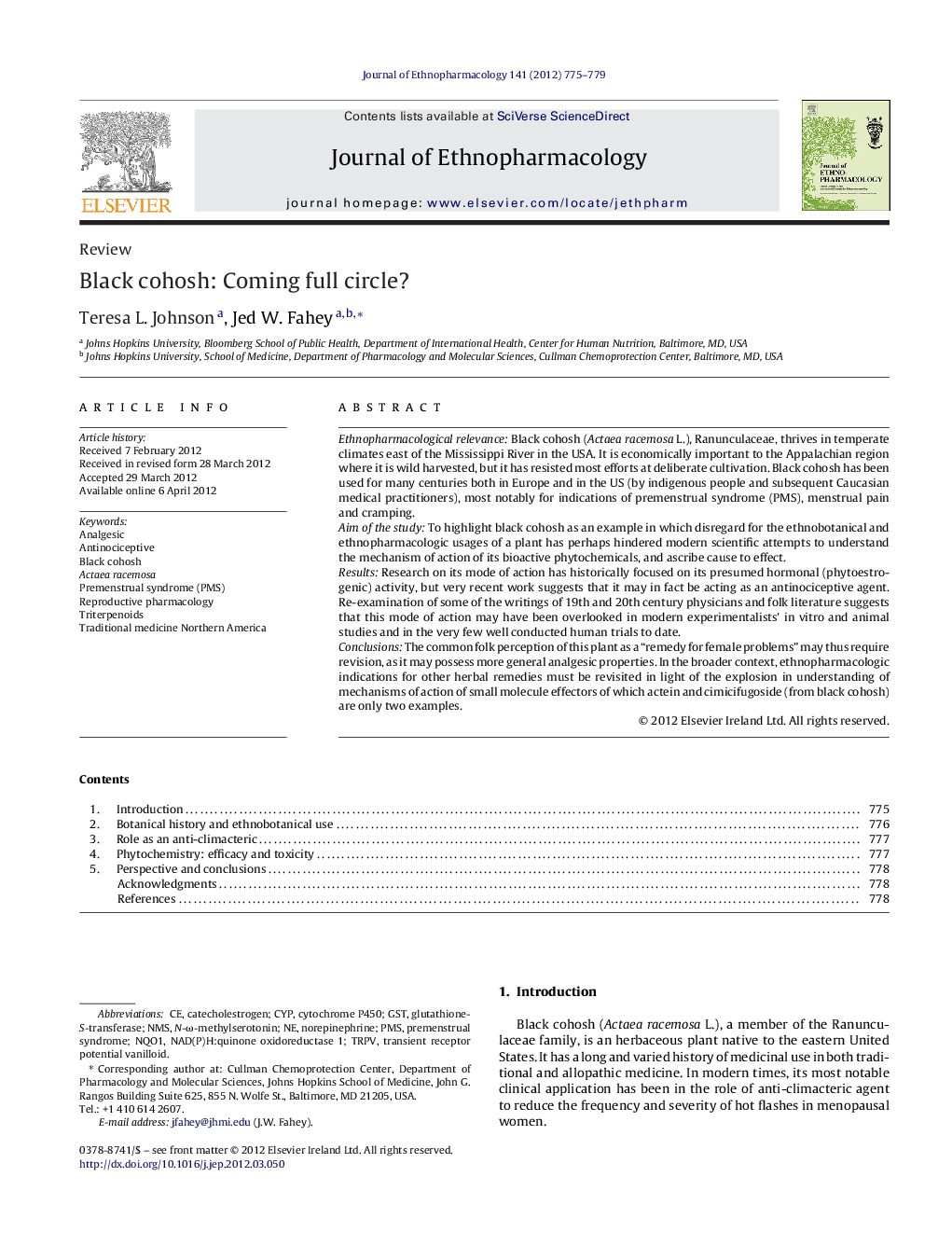| کد مقاله | کد نشریه | سال انتشار | مقاله انگلیسی | نسخه تمام متن |
|---|---|---|---|---|
| 5837945 | 1123974 | 2012 | 5 صفحه PDF | دانلود رایگان |

Ethnopharmacological relevanceBlack cohosh (Actaea racemosa L.), Ranunculaceae, thrives in temperate climates east of the Mississippi River in the USA. It is economically important to the Appalachian region where it is wild harvested, but it has resisted most efforts at deliberate cultivation. Black cohosh has been used for many centuries both in Europe and in the US (by indigenous people and subsequent Caucasian medical practitioners), most notably for indications of premenstrual syndrome (PMS), menstrual pain and cramping.Aim of the studyTo highlight black cohosh as an example in which disregard for the ethnobotanical and ethnopharmacologic usages of a plant has perhaps hindered modern scientific attempts to understand the mechanism of action of its bioactive phytochemicals, and ascribe cause to effect.ResultsResearch on its mode of action has historically focused on its presumed hormonal (phytoestrogenic) activity, but very recent work suggests that it may in fact be acting as an antinociceptive agent. Re-examination of some of the writings of 19th and 20th century physicians and folk literature suggests that this mode of action may have been overlooked in modern experimentalists' in vitro and animal studies and in the very few well conducted human trials to date.ConclusionsThe common folk perception of this plant as a “remedy for female problems” may thus require revision, as it may possess more general analgesic properties. In the broader context, ethnopharmacologic indications for other herbal remedies must be revisited in light of the explosion in understanding of mechanisms of action of small molecule effectors of which actein and cimicifugoside (from black cohosh) are only two examples.
Actaea racemosa (black cohosh, squaw root, rattleweed, black snakeroot, Macrotys) is widely distributed in the eastern USA, and has been used to provide relief from symptoms as diverse as snake-bite and premenstrual syndrome (PMS). Principally regarded as a hormonal effect, reexamination of early descriptions and recent work suggest that at least some of these indications may be due to serotonergic activity.103
Journal: Journal of Ethnopharmacology - Volume 141, Issue 3, 14 June 2012, Pages 775-779